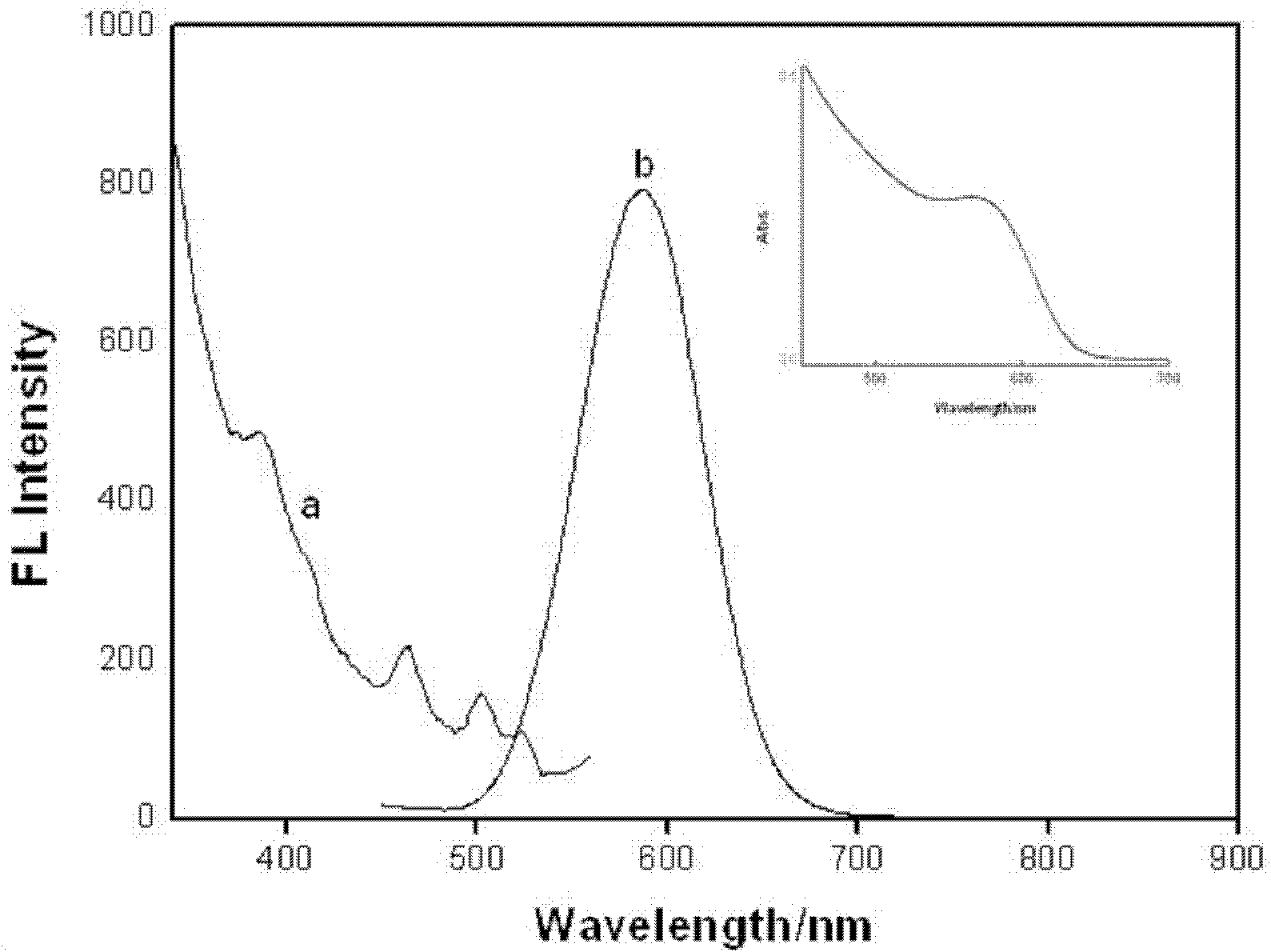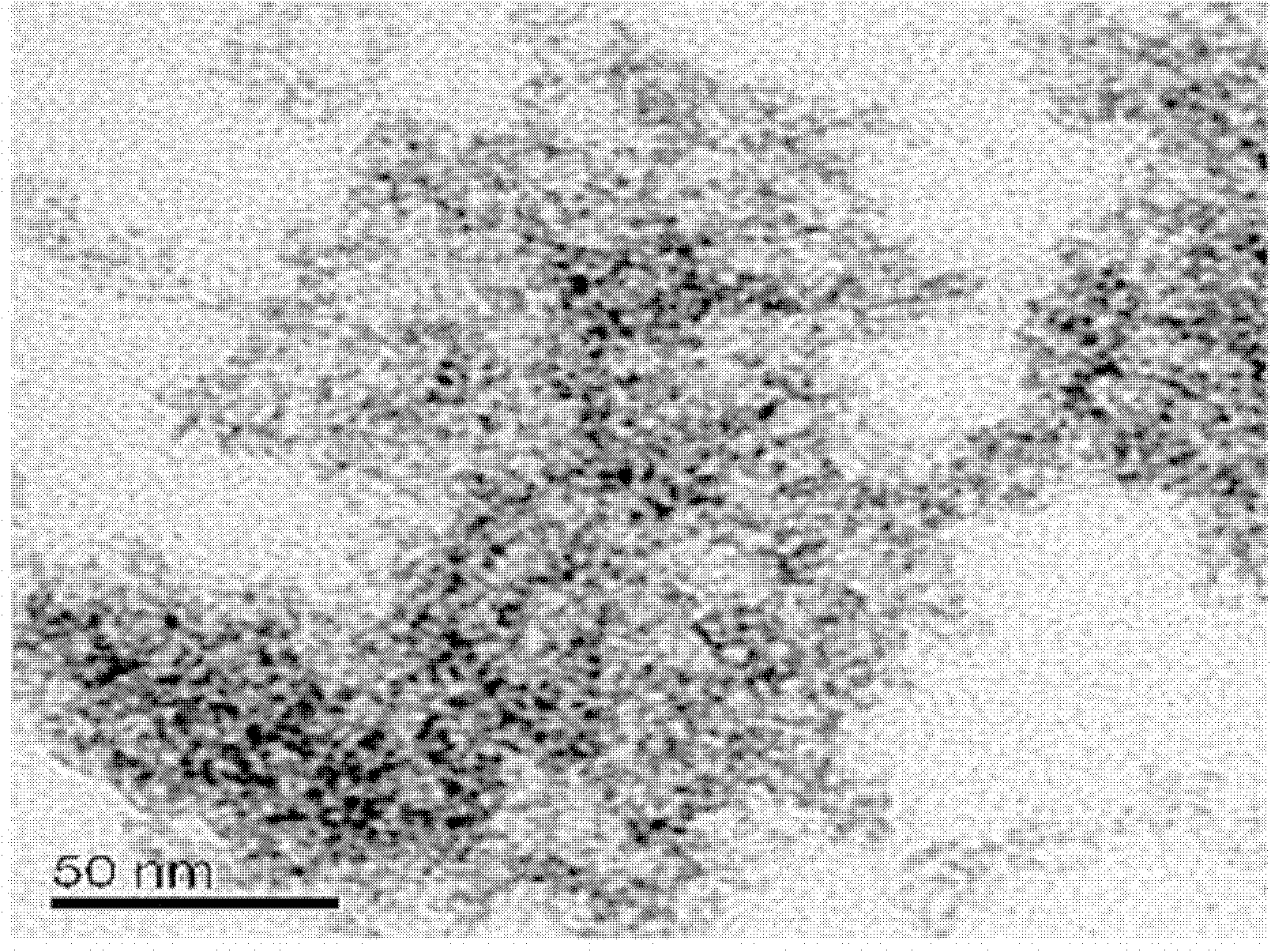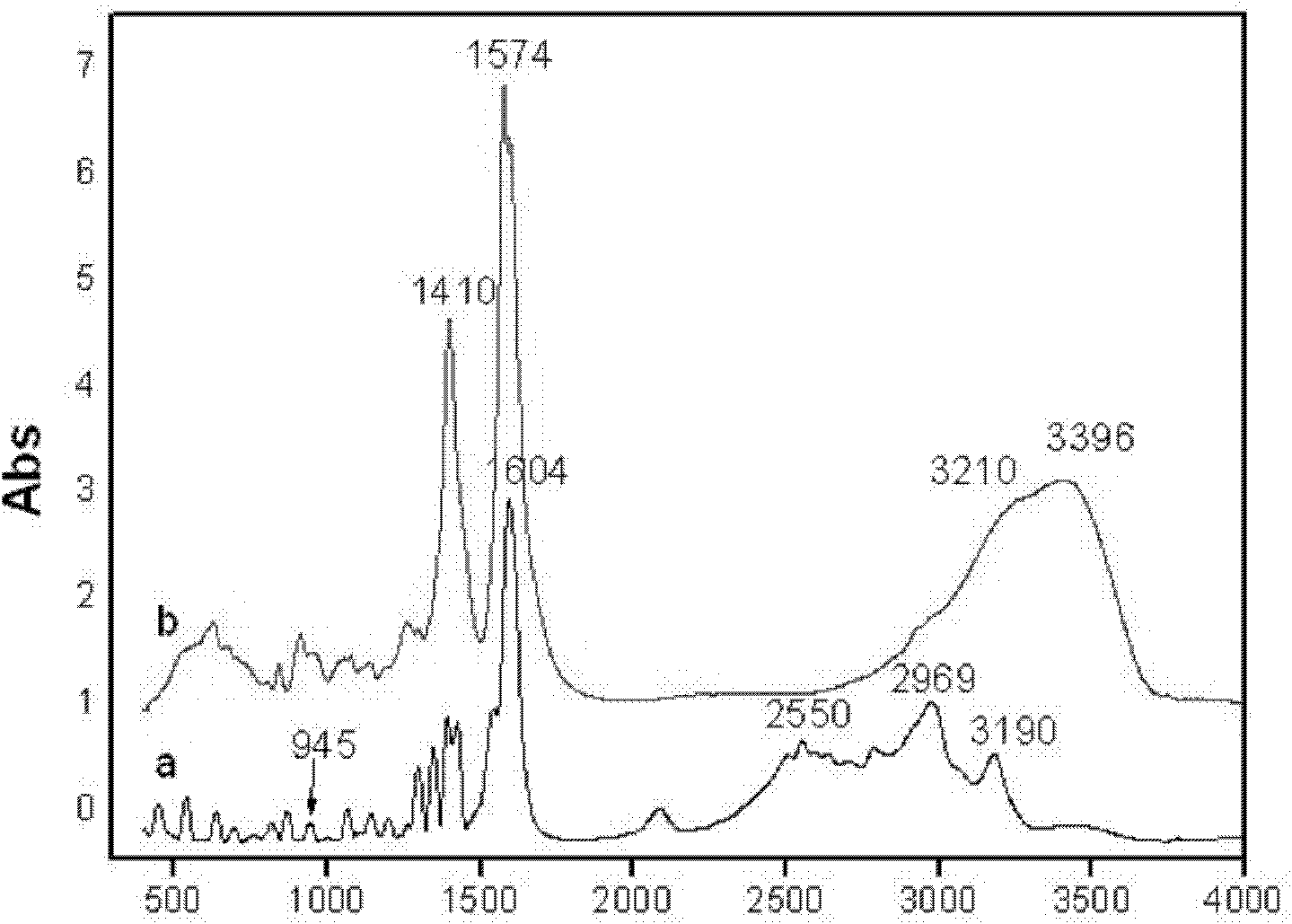Method for detecting specificity of trinitrotoluene
A trinitrotoluene and detection method technology, applied in the direction of fluorescence/phosphorescence, analysis through chemical reaction of materials, material excitation analysis, etc., can solve the problems of unfavorable trinitrotoluene, complicated pretreatment, time-consuming, etc. Achieve high sensitivity, simple sample processing, and specific detection effects
- Summary
- Abstract
- Description
- Claims
- Application Information
AI Technical Summary
Problems solved by technology
Method used
Image
Examples
Embodiment Construction
[0016] The present invention will be further described below in conjunction with the examples, rather than limiting the present invention.
[0017] Using the method of the present invention, the inventor can detect trinitrotoluene in a certain soil in Hunan University simply, quickly and specifically.
[0018] 1. Add 150mL of 67.8mg of cysteine (l-cysteine) containing 96.5mg of Cd(AC) under the condition of nitrogen protection 2 in ultrapure water; use 0.5M NaOH to adjust the pH value of the solution to 11.0; add 223.5mg sodium citrate and 17.9mgNa 2 TeO 3 ; Under the condition of blowing nitrogen, add 16.5mg NaBH 4 ; Finally, 25mL of the above solution was transferred to an autoclave, and reacted at 160°C for different times to obtain CdTe quantum dots with different particle sizes.
[0019] 2. Extraction of trinitrotoluene from soil: 2 g of soil from Hunan University was mixed with 3 mL of acetonitrile under ultrasonic conditions for 2 hours; the precipitate was filtere...
PUM
 Login to View More
Login to View More Abstract
Description
Claims
Application Information
 Login to View More
Login to View More - R&D
- Intellectual Property
- Life Sciences
- Materials
- Tech Scout
- Unparalleled Data Quality
- Higher Quality Content
- 60% Fewer Hallucinations
Browse by: Latest US Patents, China's latest patents, Technical Efficacy Thesaurus, Application Domain, Technology Topic, Popular Technical Reports.
© 2025 PatSnap. All rights reserved.Legal|Privacy policy|Modern Slavery Act Transparency Statement|Sitemap|About US| Contact US: help@patsnap.com



